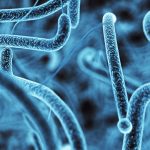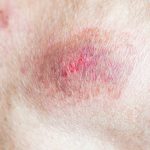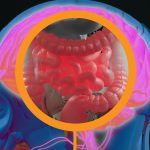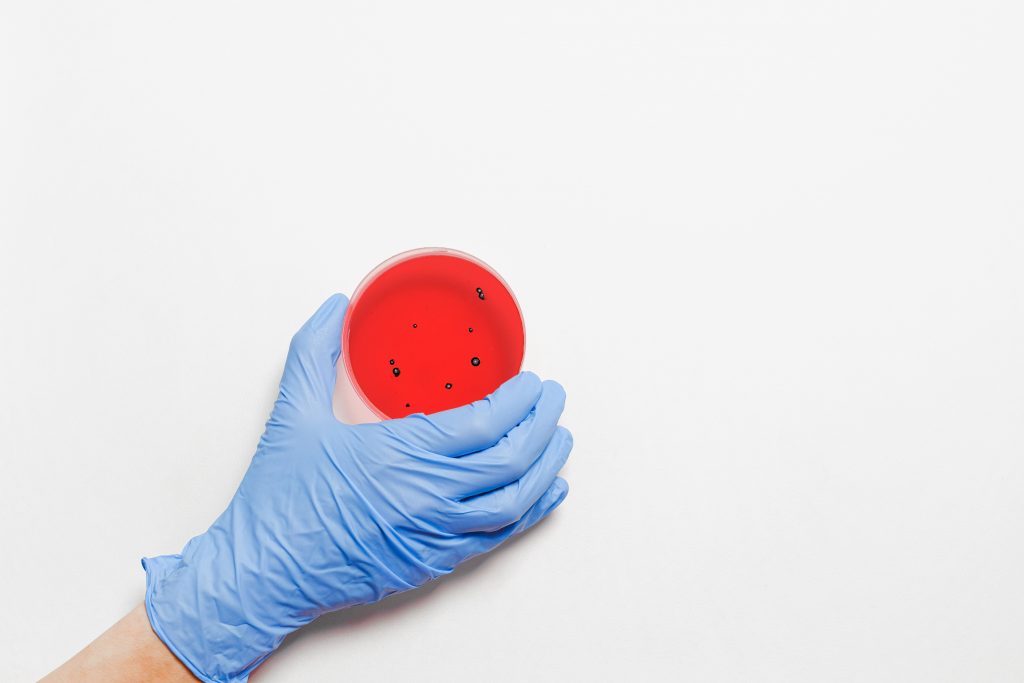Read about my 90 Day Gut Restoration Programme
The gut wall, or mucosal layer, has the unique role of both providing protection to the body by preventing entry of toxins or pathogens across this dynamic layer yet at the same time allowing in health-promoting nutrients & molecules. A diverse array of immune cells lie beneath this mucus layer, and the presence of commensal microbes abundantly colonise the GI tract, playing numerous vital roles to our overall wellbeing.
When assessing clients that come to see me with functional digestive disorders, rather than focus on what specific disease they may or may not have, I endeavour to assess and restore normal function across all the digestive process, which is best broken down into 5 areas of function.
5 key roles of the Digestive System

1. Digestion & absorption

2. Immune function

3. The Gut microbiome

4. The maintenance of an immune barrier

5. Nervous system of the gut
Digestion & absorption
Firstly, let me take you on journey on the Gastrointestinal Tract.
- Mouth: Digestion begins in the mouth, as you chew your food. Saliva starts to break down the carbohydrates first off. Food then travels down the oesophagus into the stomach where the pH (acidity) is very low.
- Stomach: On exposure to proteins in food the stomach activates enzymes called peptidases that begin to break down any protein. This acidic environment – termed ‘stomach acid’ is also one of our very first lines of defence against bacteria, parasites and yeast that we may inadvertently ingest.
- Stomach acid activates intrinsic factor—a substance which is released by stomach cells to help absorb B12. Adequate stomach acidity is required for proper mineral absorption- like zinc, iron, and magnesium, and peptidases work best in a very acidic environment.
- Finally, pancreatic enzymes are released into the duodenum part of the small intestine, when the acidity of the stomach reaches a certain pH (hold all of that information for a moment!)
- Small Intestine: As food travels down the small intestine these pancreatic enzymes are released to break down food into its constitutive parts:
- Pancreatic amylase helps to break starches into smaller polysaccharides and disaccharides.
- Protease enzymes help to break the protein chains into smaller di and tri peptides.
- Pancreatic Lipase, as well as bile released from the gallbladder into the duodenum, helps with fat digestion.
- Brush border enzymes on the microvilli: The microvilli release brush border enzymes which are the final step in protein and starch digestion. When these microvilli are damaged, so is your absorption of nutrients!
- Large Intestine: The food then travels to the large intestine where water is absorbed from the digested food and bacterial mass, producing the stool and housing trillions of bacteria.
- The large intestine is susceptible to “dysbiosis”: overgrowth of fungus, bacteria, or parasites. Fungal overgrowth (candida) is often caused by medications such as antibiotics.
Many parts of this “process” can go wrong, or certainly be affected by our modern lifestyle and overuse of medications.
Remember back to stomach acid and its vital role in setting off a crucial chain of events to facilitate digestion and absorption of essential nutrients, and how often are medications given out that suppress stomach acid?
An improper breakdown of proteins in your gut, leaving them to be fermented by gut bacteria, will cause gas and bloating and often reflux. A lack of pancreatic enzymes, for many of the same reasons, can cause similar symptoms.
With enzyme deficiency, people often complain of undigested foods and greasy stools. Lack of stomach acid, or hypochlorhydria, is far more commonly the culprit than the often over-diagnosed reflux and acid indigestion. Unfortunately there isn’t a quick and easy test for this condition but pancreatic deficiency can be assessed with a stool test, looking for pancreatic elastase. Low levels of pancreatic elastase indicate low level digestive enzyme output, which can be corrected with enzyme supplementation.
The (Mucosal) Immune System of the gut
Approximately 70% of our immune system – termed the mucosal immune system – is located within the GI tract beneath the mucosa. The primary purpose of this gut immune system is to provide a first line of defence – termed “innate immunity”. The cells that are embedded here are constantly in contact with foods, microbes and toxins and as such make innumerable immunological decisions every day. As the gut makes its decisions, it then relays information from the innate to the adaptive and systemic immune system. The gut is where health begins, and is also home to a plethora of innumerable species of bacteria that form a symbiotic relationship with the host (us!) to establish “tolerance” and immune balance.
The Gut Microbiota
Gut microbiota (formerly called gut flora) is the name given today to the microbe population living in our intestine. While each of us has a unique microbiota, it always fulfils the same physiological functions, with direct impact on our health:
- It helps the body to digest certain foods that the stomach and small intestine have not been able to digest.
- It helps with the production of some vitamins (B and K).
- It helps us combat aggressions from other microorganisms, maintaining the wholeness of the intestinal mucosa.
- It has been shown to modulate our immune system.
A healthy and balanced gut microbiota is key to ensuring proper digestive functioning. Oftentimes, on further investigation through a comprehensive stool test assessment – The GI Effects ™ – I pick up gut infections such as Helicobacter Pylori or parasites that are negatively impacting the microbiome.
Years or lifetimes of poor diet and medication such as antibiotics severely disrupt the ecology of your gut, leaving a state of dysbiosis where pathogens such as yeasts and bad bacteria can flourish.
Immune barrier integrity (aka leaky gut or intestinal permeability)
In a normal, healthy gut lining there are epithelial cells forming tight junctions that allow certain molecules to pass across into the bloodstream, such as vitamins, minerals and digested food in the form of amino acids, glucose and some fatty acids. However, it also acts as a barrier preventing entry to larger damaging molecules, foreign particles and bacteria.
This intestinal lining is very delicate and can be easily damaged by poorly digested foods, provocative proteins (such as gluten), toxins, antibiotics, some medications and high levels of cortisol.
When there is damage to this lining, it can open up slightly, causing a condition called leaky gut or Intestinal permeability. This allows partially digested foods, toxins, and bacteria to enter into the bloodstream and thus presented to the immune system just beyond the gut wall. Resulting symptoms are persistent inflammation, irritation, possible autoimmune attacks, pain, digestive discomfort and food intolerances (resulting in further inflammation).
The nervous system of your gut
You’ve probably heard the saying ‘fight or flight’ as a reaction of the nervous system in response to a stressor. During fight or flight, blood flow is shunted away from the gut, and towards muscles that can fight the perceived stress. This is why food feels so heavy and undigested if we eat on the run or while stressed. We literally shut our gut down in order to attend to more urgent matters.
So many people living this modern lifestyle are experiencing unsustainable stress levels. Not only will they have chronic poor blood flow to their gut, but also high levels of the stress hormone cortisol and stress-related neurotransmitters such as adrenaline and glutamate, which can cause damage to the mucosal barrier. A client suffering from stress and IBS or functional digestive disorders will not totally improve until the stress has been addressed.
Small Intestinal Bacterial Overgrowth-SIBO
SIBO is actually a very common (up to 84%) yet often undiagnosed cause of IBS.
It’s not uncommon for clients to tell me that they wake up with a flat stomach and by lunchtime their clothes are so uncomfortably tight they look six months pregnant.If you’re having gas and/or bloating regularly, you could have food sensitivities and/or a gut infection, such as SIBO.
What is SIBO?
SIBO stands for Small Intestinal Bacterial Overgrowth.
Normally, bacteria are found in the trillions in the Large Intestine, where they perform numerous symbiotic functions for our overall metabolism. SIBO is a condition where bacterial overgrowth occurs in the absorptive area – the Small Intestine. Those bacteria are then able to act on poorly-digested, fermentable carbohydrates, causing hydrogen, methane and hydrogen sulphate gases that produce uncomfortable symptoms such as bloating, gas, abdominal pain, diarrhoea and/or constipation.
The effects of SIBO can, and often do extend beyond direct gastrointestinal symptoms. Increased gut permeability can occur, causing translocation of bacteria and insufficiently digested food particles that trigger immune activation, leading to pain and other symptoms such as brain fog. It also predisposes an individual to food sensitivities.
Nutrient deficiencies can arise as the bacteria consume some of the ingested foods; B12 and iron, for example, which can lead to anaemia, and deconjugation of fatty acids from bile that reduces absorption of fat-soluble vitamins – A, D, E and K.
SIBO sufferers also tend to have altered secretory IgA values, demonstrating that SIBO directly alters immune activity in the gut.
Symptoms of SIBO can include:
- Diarrhoea
- Constipation
- Alternating constipation and diarrhoea
- Abdominal cramping
- Bloating and/or wind
- Burping and Acid Reflux/GORD
- Food sensitivities
- Joint pain
- Skin rashes
- Iron and B12 deficiency
- Respiratory symptoms such as asthma
There are a number of associated conditions with SIBO:
- Fibromyalgia and Chronic Fatigue Syndrome – especially associated with diarrhoea dominant SIBO
- Chronic constipation – associated with methane-dominant SIBO
- Irritable bowel syndrome (IBS)
- Inflammatory Bowel disease (Crohn’s disease and ulcerative colitis)
- Acid reflux
- Coeliac disease
- Interstitial Cystitis
- Restless leg syndrome
- Acne Rosacea
- Diabetes
- Hypothyroidism
- Scleroderma
- Chronic Prostatitis
- Diverticulitis
GERD
Gastroesophageal reflux disease, or GERD, is a digestive disorder that affects the lower oesophageal sphincter (LES): the ring of muscle between the oesophagus and stomach. Stomach acid belongs in the stomach – not in the oesophagus – and this is why we have this valve. The standard approach is to provide a proton pump inhibitor medication to reduce stomach acid secretion in people suffering from heartburn and GERD.
Instead, I propose to always the question, “what is causing the LES to malfunction?” It can be any number of the areas described previously under the digestion 101 or SIBO section. As always, I take a whole picture approach and work across all of these areas, endeavouring to get to the root cause.
The whole picture
I use the functional medicine model to assess your health. This means seeking to identify interactions between different systems in the body through comprehensive case history taking, your presenting signs and symptoms and on occasion functional laboratory testing. The goal is to identify and address the triggers and underlying causes of your health problems rather than simply focusing on symptoms.
To book an appointment or speak with a member of my team, get in touch.









